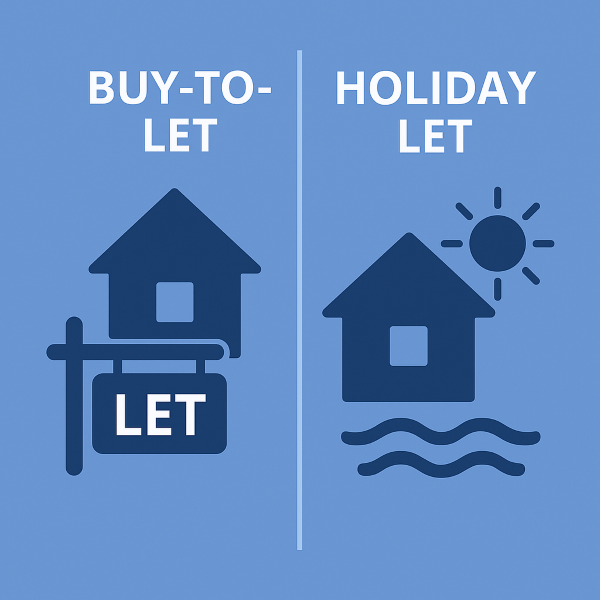Buy-to-Let and Holiday Let | The buy-to-let sector comprises properties in the private rented sector (PRS) financed by mortgages. It represents about a fifth of the UK’s total mortgage market and accommodates approximately 45% of private renters. Whether you’re an experienced landlord or a new investor, buy-to-let and holiday let mortgages offer attractive income opportunities, but each comes with unique requirements, risks, and lender expectations.
At Connect, we help advisers and brokers navigate the buy-to-let and short-term rental landscape, with access to specialist lenders, compliance support, and case-by-case lending solutions.
What’s the Difference Between Buy-to-Let and Holiday Let Mortgages?
| Feature | Buy-to-Let (BTL) | Holiday Let |
|---|---|---|
| Purpose | Long-term rental to tenants | Short-term rental (Airbnb-style) |
| Tenancy Agreements | AST (Assured Shorthold Tenancy) | Nightly/weekly guest lets |
| Income Consideration | Rental yield vs. mortgage payments | Income projections & seasonal rates |
| Usage | Can’t stay in the property | Some personal use allowed |
Holiday let lenders often require evidence of occupancy rates and property management plans, while BTL lenders may favour portfolio landlords or limited company structures.
Buy-to-Let Mortgage Criteria
Buy-to-let mortgages are available to individual landlords, SPVs (limited companies), and portfolio investors. Common eligibility factors include:
-
Minimum deposit of 20–25%
-
Interest-only or repayment terms
-
Proof of rental income or projected yield
-
Property type and tenant profile
-
Stress-testing based on income and mortgage rate
For those building a portfolio, Specialist Mortgage Network for Advisers provides support to help advisers manage complex multi-property cases.
Holiday Let Mortgage Considerations
Holiday lets are increasingly popular but come with stricter lender criteria and tax implications. Key points to note:
-
Property must be available for rent at least 210 days a year
-
Used commercially (not as a second home)
-
Lenders assess income based on peak and off-peak seasons
-
Often requires higher deposits (25–30%)
-
Some lenders accept Airbnb-style income projections
Our team helps advisers place clients with lenders open to holiday let income and Airbnb mortgages, even where traditional high-street lenders decline.
Let-to-Buy as an Alternative
Let-to-buy allows homeowners to rent out their current home while purchasing a new residential property. This strategy can be complex, but it provides a bridge for those looking to expand into BTL gradually. Please speak to our team for guidance on structuring these deals effectively.
Partner with a Network That Understands Investor Lending
At Connect, we support brokers specialising in property investment through:
-
Access to BTL, holiday let, and limited company lenders
-
AI-driven case-checking and document management tools
-
Dedicated training for investor clients and specialist cases
-
Optional membership in our Mortgage Networks for Mortgage Advisers hub
Let’s Help You Place the Right Mortgage
Whether you need a buy-to-let mortgage, holiday let finance, or are helping clients plan a let-to-buy move, we can connect you with lenders and strategies tailored to their goals.
📩 Get in touch to speak with a Connect consultant or explore our adviser support services.
Thank you for reading our publication on “Buy-to-Let and Holiday Let | Investment Mortgage Options UK” Stay “Connect“-ed for more updates soon!

